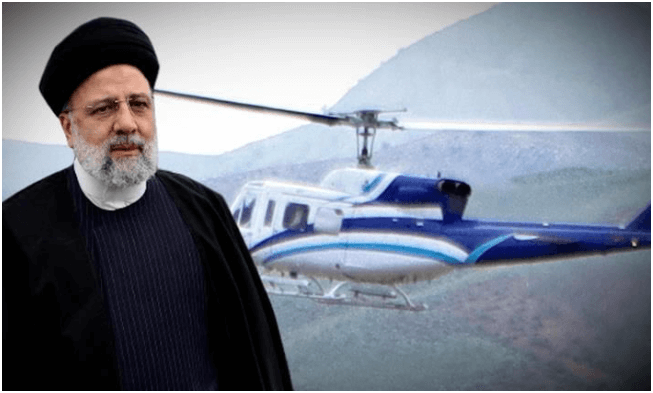Iran Mourns President Raisi and Foreign Minister After Fatal Helicopter Crash
In a tragic incident that has shaken Iran, President Ebrahim Raisi and Foreign Minister Hossein Amirabdollahian were killed in a helicopter crash in the mountainous terrain near the Azerbaijan border. The crash occurred on Sunday, and the wreckage was discovered early Monday after rescue teams battled through severe blizzard conditions and treacherous terrain throughout the night.
The helicopter, a US-made Bell 212, was carrying several dignitaries, including East Azerbaijan Province Governor Malek Rahmati and Ayatollah Mohammad Ali Ale-Hashem, the representative of the Leader of the Islamic Revolution to East Azerbaijan province. The aircraft reportedly slammed into a mountain peak, though the exact cause of the crash remains unclear.
Rescue teams, including Iran’s Red Crescent, worked tirelessly through the night to locate the wreckage. Pirhossein Kolivand, the head of Iran’s Red Crescent, confirmed to state TV that no signs of life were found among the passengers. Images from the crash site broadcast by state TV showed the charred remains of the helicopter, underscoring the severity of the accident.
Iran’s Supreme Leader Ayatollah Ali Khamenei expressed profound sorrow over the loss and declared five days of national mourning. He also sought to reassure the nation that state affairs would continue without disruption. In response to the tragedy, the national broadcaster halted all regular programming to air prayers being held for Raisi across the country.
The international community reacted swiftly, with several countries offering condolences and assistance. The UAE and Iraq expressed their willingness to aid in any rescue efforts. The White House confirmed that President Joe Biden had been briefed on the crash, and China voiced deep concern. The European Union offered emergency satellite mapping technology to aid the search and rescue operations.
Ebrahim Raisi, 63, was elected president in 2021. His tenure has been marked by a stringent enforcement of morality laws, a harsh crackdown on anti-government protests, and a firm stance in nuclear negotiations with global powers. Raisi’s presidency was often contentious, characterized by both his staunch conservatism and his efforts to assert Iran’s position on the international stage.
Raisi’s death is not only a significant loss for Iran but also adds a layer of uncertainty to the country’s political landscape. His administration had been navigating a complex array of domestic and international challenges, from economic sanctions to regional tensions.
The ill-fated flight was returning from a ceremony to inaugurate a dam on Iran’s border with the Azerbaijan Republic. This event was part of Raisi’s ongoing efforts to boost infrastructure and regional cooperation. The crash occurred in the Varzaqan region, a mountainous area that presented significant challenges for the rescue teams.
As Iran grapples with this sudden loss, the nation’s leadership faces the task of maintaining stability and continuing the functions of government. The Supreme Leader’s message aimed to provide a semblance of continuity and calm amid the mourning.
The international offers of support and condolences highlight Iran’s complex relationships with various countries. The incident may prompt a temporary thaw in diplomatic relations as nations come together in the face of this human tragedy.
The helicopter crash that claimed the lives of President Ebrahim Raisi and Foreign Minister Hossein Amirabdollahian is a significant event in Iran’s recent history. As the nation mourns and leaders work to ensure stability, the incident underscores the unpredictable nature of political life and the ever-present risks faced by those in positions of power. The legacy of Raisi’s presidency, marked by strong policies and contentious actions, will now be viewed through the lens of his untimely death, leaving an indelible mark on Iran’s political narrative.
When the rescue teams finally reached the crash site in the early hours of Monday, they were confronted with a grim scene. The wreckage lay scattered across the snow-covered mountainside, a stark reminder of the harsh conditions that had hampered search efforts. The blizzard had not only obscured visibility but also made the terrain even more dangerous to navigate.
The images broadcasted by state TV showed rescuers in bright jackets and head torches working diligently despite the severe weather. They huddled around GPS devices, coordinating their search in the pitch-black night. The determination and resilience of these teams were evident as they faced nature’s relentless fury to reach the crash site and confirm the fate of those on board.
Stay informed with the latest updates – click here .

